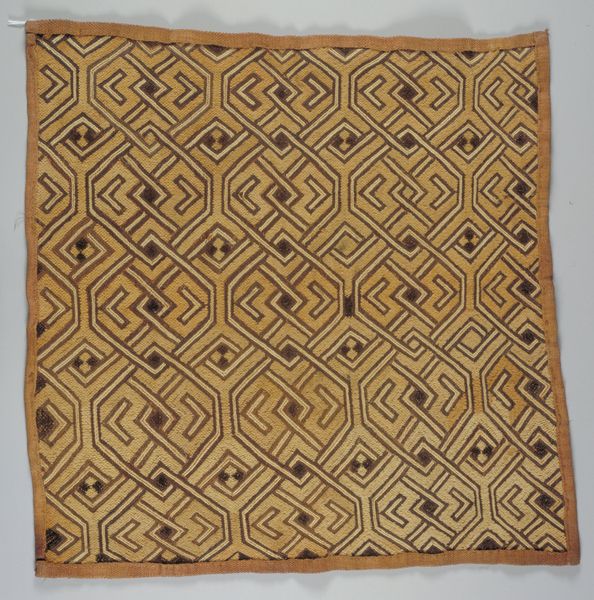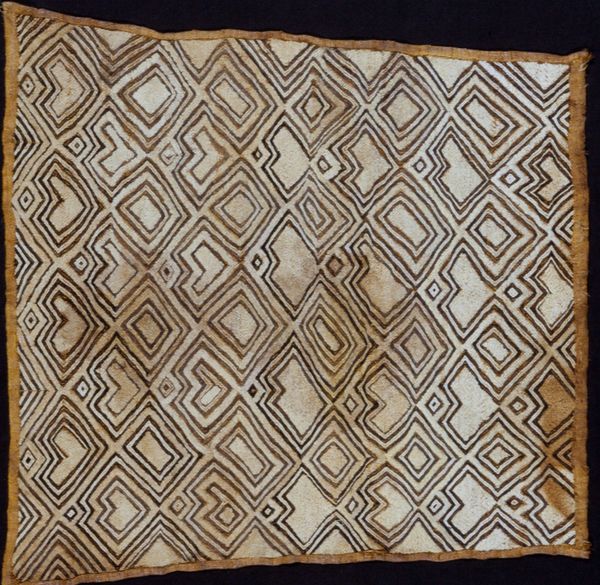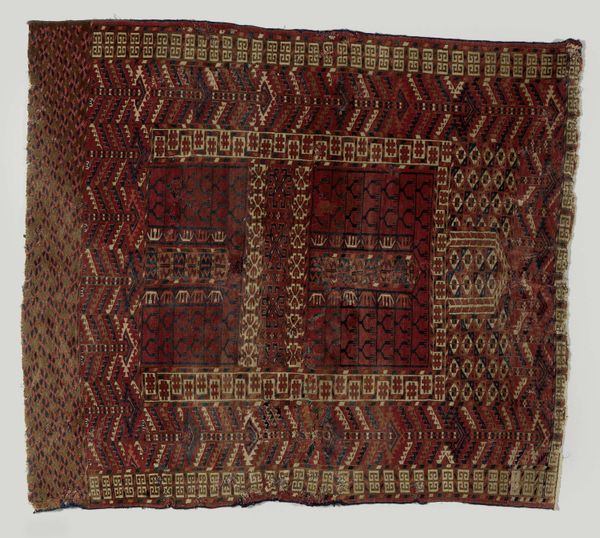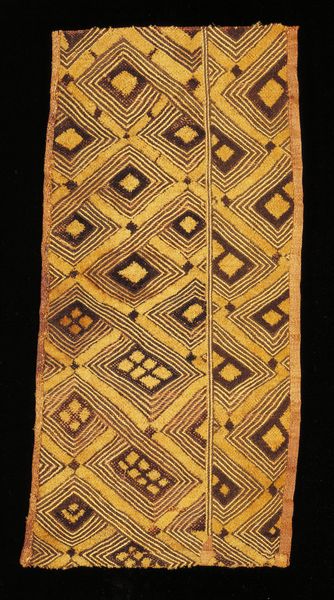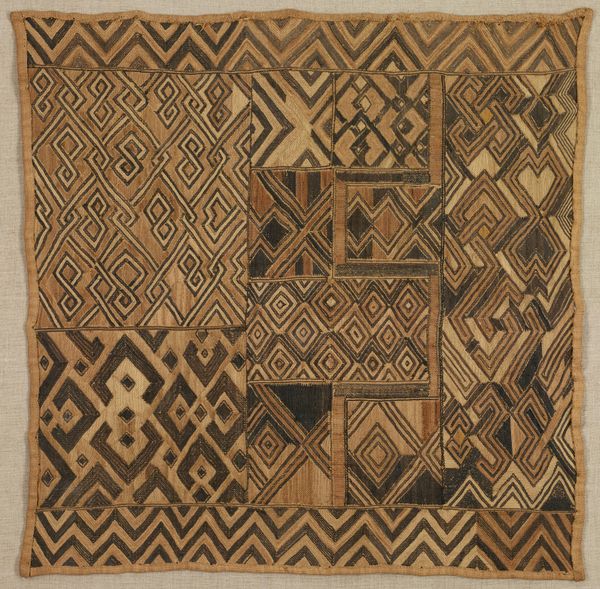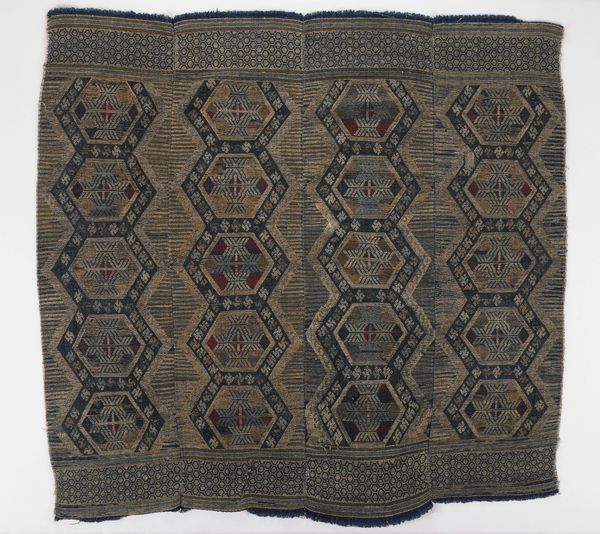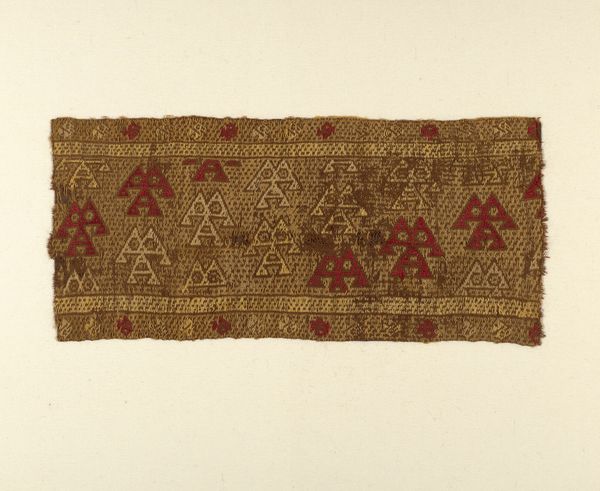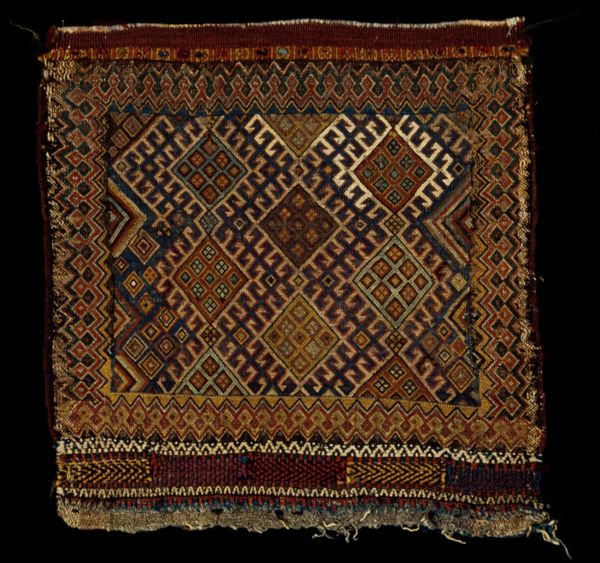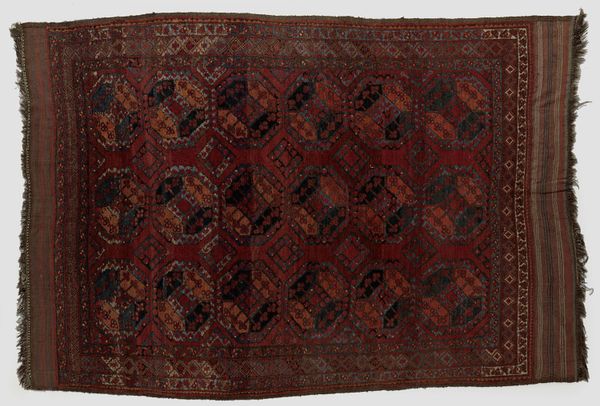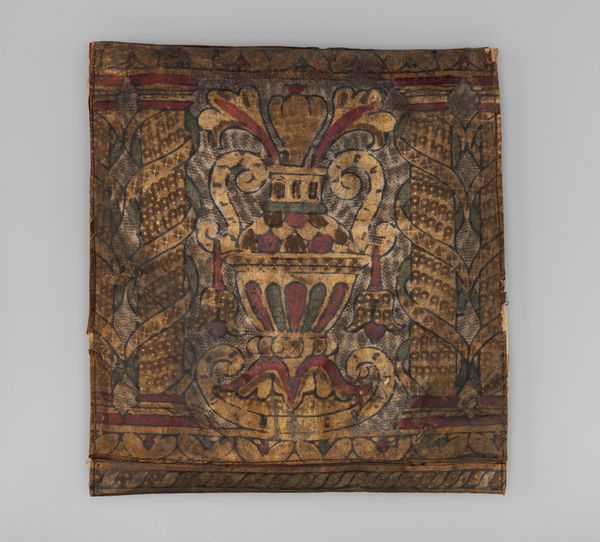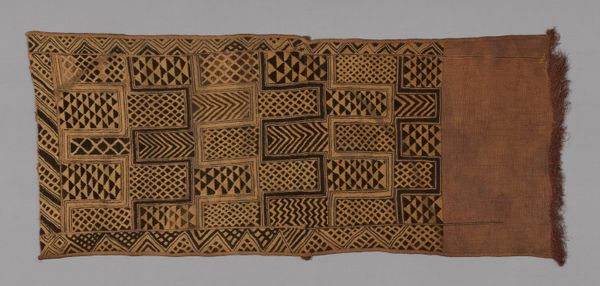
panel, textile
#
african-art
#
natural stone pattern
#
naturalistic pattern
#
panel
#
pattern
#
textile
#
repetitive shape and pattern
#
organic pattern
#
geometric
#
repetition of pattern
#
vertical pattern
#
regular pattern
#
pattern repetition
#
layered pattern
#
organic texture
Dimensions: 24 3/4 x 26in. (62.9 x 66cm)
Copyright: Public Domain
This panel was made by the Kuba people, and is now in the Minneapolis Institute of Art. Look at this maze of patterns, a real testament to the art of making. The texture of this piece is so interesting. It looks like it was created with a stamp, maybe carved from wood, like a printmaking process? I bet it feels great to touch. Think of each mark, each line, not just as part of a pattern but as a decision, a moment in time. There's a dark rhombus right in the middle that draws my eye: it looks like a dark heart. The colour palette is simple, but it’s the variation within that simplicity that makes it sing. This panel reminds me a little bit of the work of Sophie Taeuber-Arp. Both artists revel in the beauty of geometric abstraction and the power of repetitive forms. But where Taeuber-Arp's work is often precise and refined, this Kuba panel feels more earthy, more handmade. It’s a reminder that art is not just about the final product, but also about the process, the journey, and the conversations that happen along the way.
Comments
minneapolisinstituteofart almost 2 years ago
⋮
Cut pile embroidery is produced by several ethnic groups within the Kuba culture, including Bushoong, Shoowa, Ndengese, Ngongo and Ngombe. The different styles are distinguished by characteristics such as the color of the ground cloth, the use of a flat stem stitch and the way in which the cut-pile is used to build up pattern areas. The designs are geometric and rectilinear, utilizing variations of chevrons, squares, triangles, diamonds, interlaced knots and L-shaped motifs. The motifs are symbolic and refer to Kuba creation myths, historical events or ordinary objects such as hoes, tortoises, or shields. Panels such as these are produced primarily for display during funeral rituals and are subsequently used as burial goods. Offered as gifts to the deceased by their clan and by individuals from the village, cut pile embroideries are important symbols of wealth and prestige that reflect not only on the individual, but also on the entire clan.
Join the conversation
Join millions of artists and users on Artera today and experience the ultimate creative platform.
